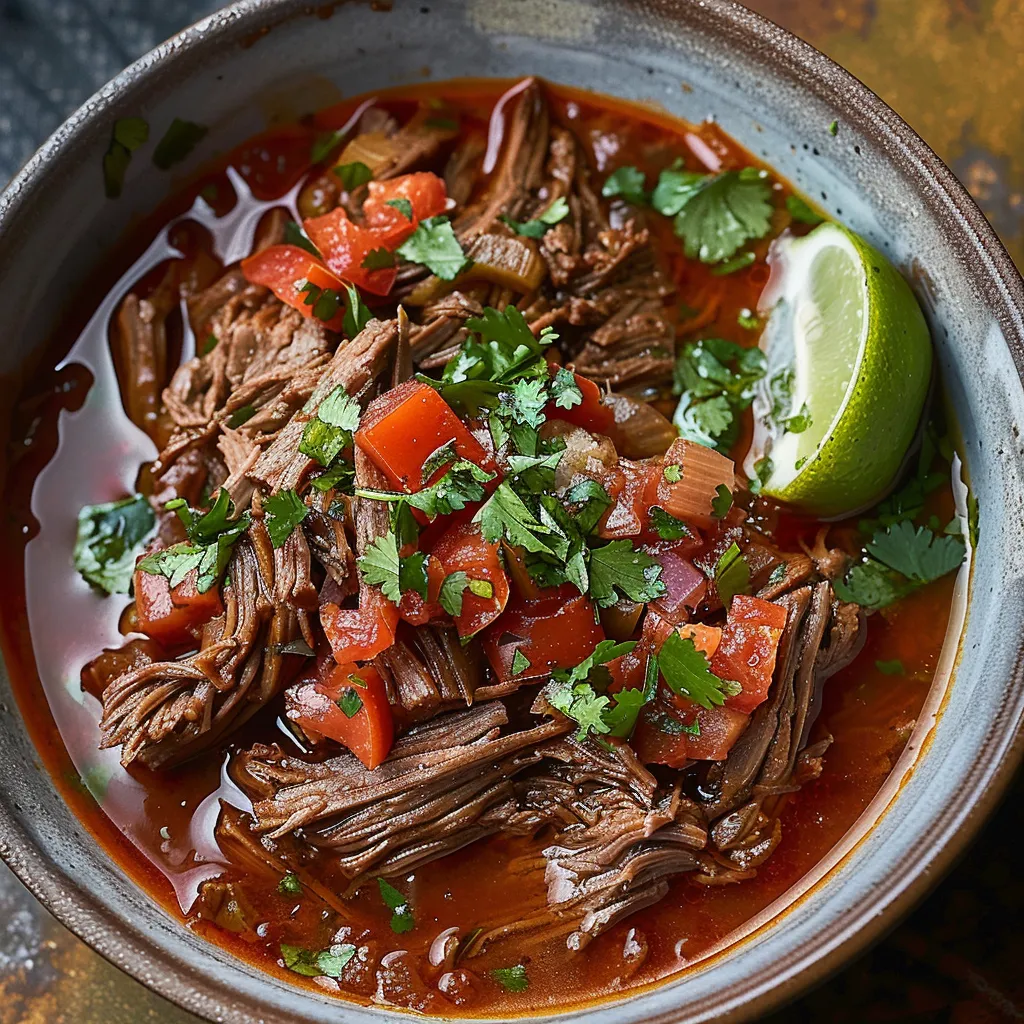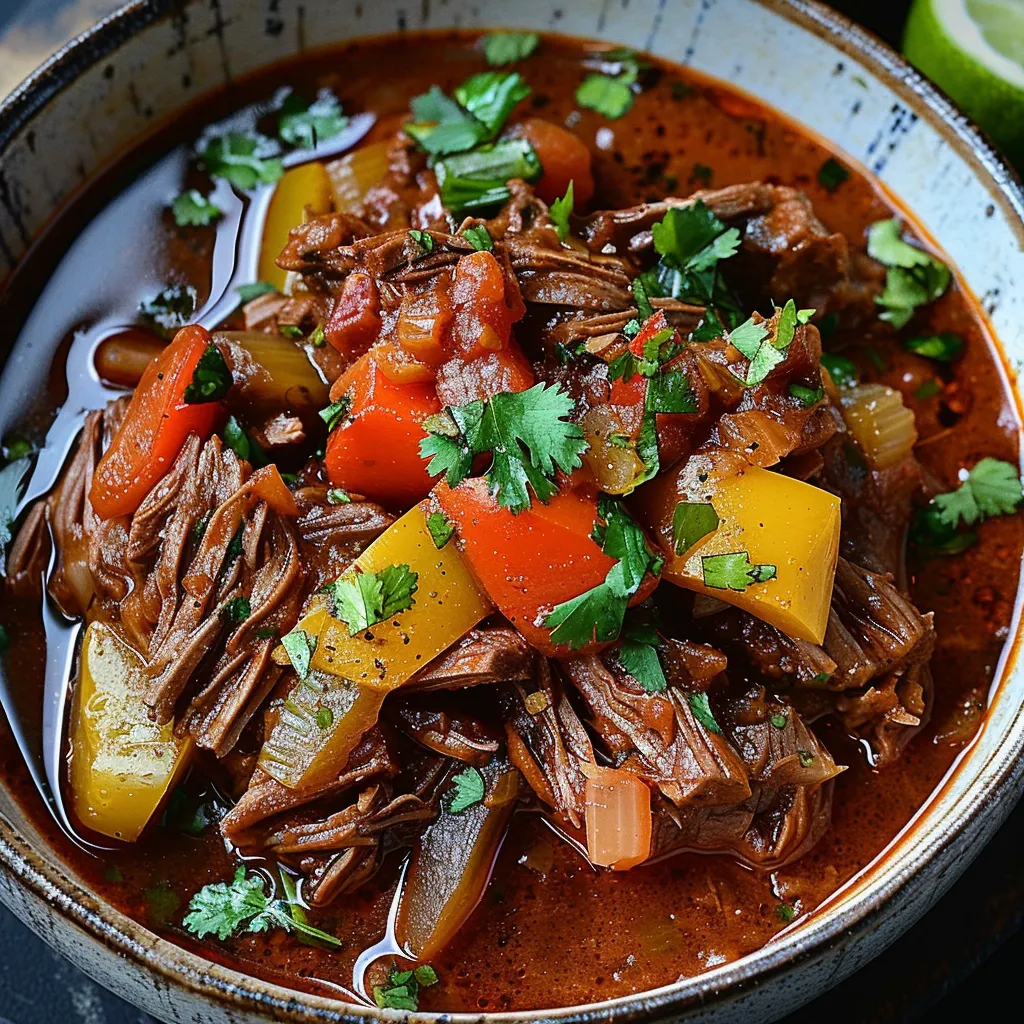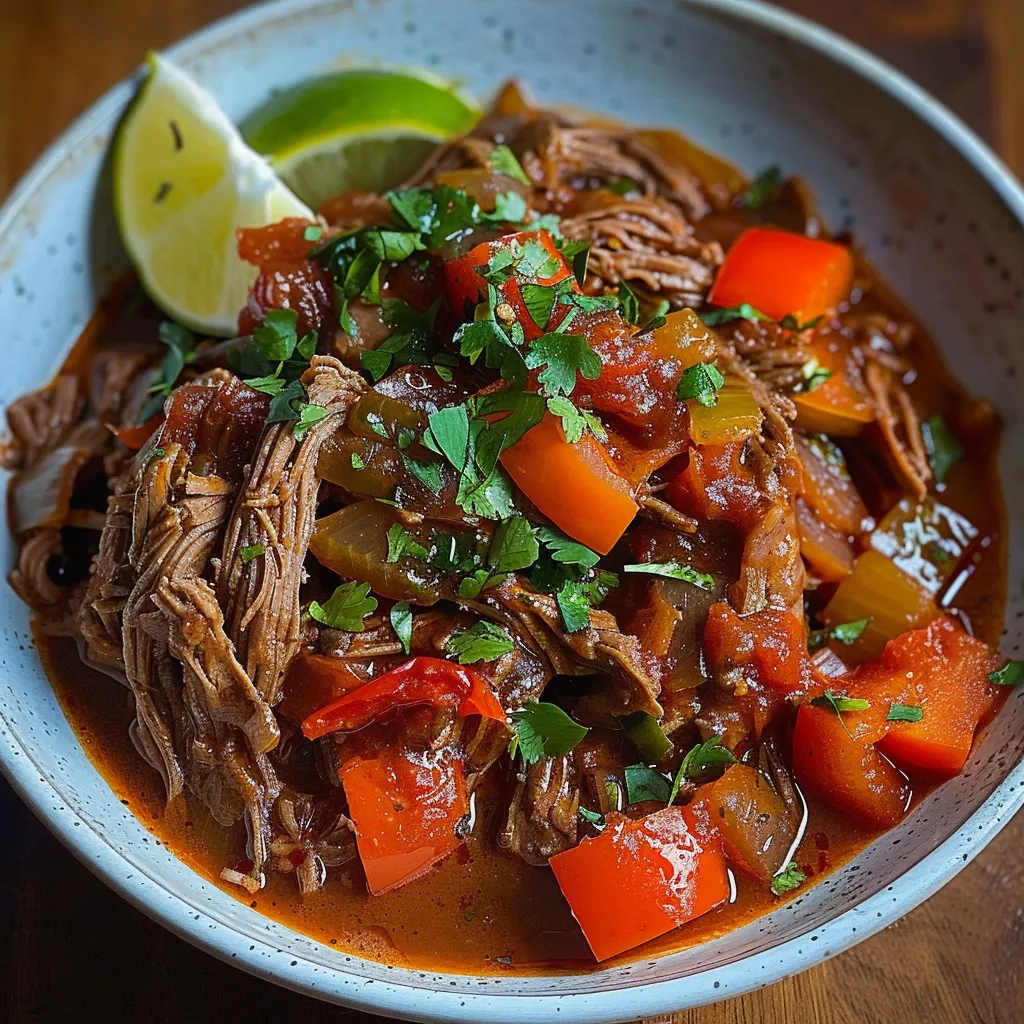 Pin it
Pin it
The moment you taste authentic Cuban Ropa Vieja, you're transported to lively Havana corners—those tender, shredded beef strands bathed in a rich, complex sauce packed with mellow peppers, bold garlic, and earthy cumin. This isn't just another beef dish; it's a celebration of flavors, a tribute to tradition, and confirmation that patience truly pays off. What began as a simple weekend project in our family has turned into a beloved ritual that brings everyone rushing to the table when dinner's ready.
I first made this dish for my Cuban neighbor who missed home cooking. After one taste, tears welled in her eyes as she said it matched her grandmother's version perfectly. The secret? Taking extra time to sear the meat thoroughly before slow cooking, and just being patient—allowing those incredible flavors to mingle unrushed for several hours.
Essential Ingredients and Market Tips
- Flank Steak: Look for cuts with good marbling and vibrant red color.
- Bell Peppers: Combine red and green varieties for balanced flavor and visual appeal.
- Tomato Sauce and Paste: Select options without added sugar or excessive sodium.
- Cumin: Get whole seeds and lightly toast before grinding for enhanced aroma and flavor.
 Pin it
Pin it
Detailed Cooking Instructions
- Step 1:
- Pat the flank steak dry using paper towels, season with salt and pepper, then rest at room temperature.
- Step 2:
- Heat your pan until smoking hot and sear the steak thoroughly on each side.
- Step 3:
- Slice your onions and bell peppers, mince the garlic, and prepare remaining ingredients.
- Step 4:
- Transfer the steak to your slow cooker and add beef broth around the edges.
- Step 5:
- Mix tomato sauce with paste and drizzle over the meat.
- Step 6:
- Add the peppers, onions, garlic, cumin, and fresh cilantro.
- Step 7:
- Set to low for 8-10 hours or high for 4 hours.
- Step 8:
- Shred the beef using two forks and stir into the sauce.
- Step 9:
- Let the mixture rest for 15-20 minutes before serving.
My grandma always said you can judge good Ropa Vieja by how the meat soaks up the sauce. Whenever I cook this dish now, I'm transported back to her kitchen, where it would simmer all day long, filling the house with wonderful aromas before family gathered for Sunday meals.
Flavorful Balancing Secrets
The subtle sweetness from the peppers and onions needs to balance perfectly with the savory beef and tomatoes, while a splash of vinegar lifts everything up. Throw in a handful of capers or green olives during the final hour for a salty punch that brings all flavors together.
Serving Suggestions
Serve over fluffy white rice with black beans for a classic approach. It's also wonderful wrapped in tortillas, heaped on crispy tostones, or used as filling for homemade empanadas.
Ropa Vieja isn't just about satisfying hunger; it nourishes the soul with flavors that convey stories of cultural resilience and culinary imagination. Whether you're honoring family heritage or exploring new tastes, this dish offers a gateway to Cuba's rich food legacy and speaks that common language we all understand—soul-warming comfort food.
 Pin it
Pin it
Frequently Asked Questions
- → Why's this dish named ‘Ropa Vieja’?
- Ropa Vieja translates to ‘old clothes’ in Spanish because the shredded beef looks like torn fabric. A legend says the dish dates back to a man who turned his clothes into food during hard times.
- → Is flank steak the only option?
- Not at all! Chuck roast, brisket, or skirt steak work great too. Any cut of beef that falls apart after slow cooking will do.
- → What sides are good with it?
- Stick to tradition with white rice, fried plantains, black beans, or an avocado salad. Some also enjoy it with Cuban bread or tortillas to soak up all the sauce.
- → Can I use a pressure cooker instead?
- Of course! Sear the beef on the sauté setting first, then pressure cook for 40 to 45 minutes. Let the pressure release on its own for 15 minutes, shred the beef, and simmer the sauce until thick.
- → How do I store leftovers?
- Store them in an airtight container. Keep in the fridge for up to 4 days, or freeze for as long as 3 months. Flavors tend to deepen overnight, so they're often even tastier the next day.
